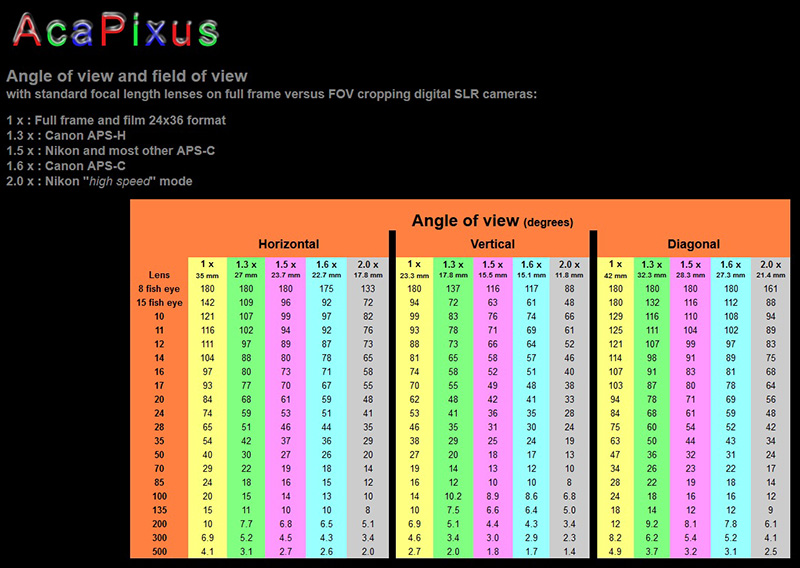If you want to do time lapse photography of the eclipse with a stationary lens, you need to know the changing elevation of the sun and how far it will travel across the sky. And then you need to know which lens will have a wide enough and high enough angle of view to take it all in.
Finding the Right Information on the Movement of the Sun
 You can determine all the information you need about the sun using the eclipse calculator at the U.S. Naval Observatory (USNO).Choose the eclipse date (August 21), the state or territory, and then the city closest to your shooting location. I chose Casper Wyoming for this example. Then click “Get Data”.
You can determine all the information you need about the sun using the eclipse calculator at the U.S. Naval Observatory (USNO).Choose the eclipse date (August 21), the state or territory, and then the city closest to your shooting location. I chose Casper Wyoming for this example. Then click “Get Data”.
 You will get results that look like this. The altitude shows the suns heights above a level horizon without regards to mountains and other obstructions. If you are in Casper Wyoming and want to include the horizon in your photo you will need a lens with a vertical angle of view of 59° plus a little extra so the sun isn’t at the top edge of your frame. That means a 70° to 75° vertical angle of view at a minimum. More would be better.
You will get results that look like this. The altitude shows the suns heights above a level horizon without regards to mountains and other obstructions. If you are in Casper Wyoming and want to include the horizon in your photo you will need a lens with a vertical angle of view of 59° plus a little extra so the sun isn’t at the top edge of your frame. That means a 70° to 75° vertical angle of view at a minimum. More would be better.
The Azimuth is the direction of the sun from your location using compass coordinates. North is 0°. East is 90°. South is 180°. West is 270°. In Casper Wyoming the sun will travel from 118° (East Southeast) to 180° (due south). The sun will travel a total of 62° (180 minus 118) and again you want to add a little extra width in the frame around the sun, so you will need a horizontal angle of view of around 70° to 75° at a minimum. More would be better.
Choosing a Lens with Enough Angle of View Coverage
Now you need to find the right lens focal length to take it all in. So you will need a focal length and angle of view chart.
 I found this chart at the AcaPixus web site. The first thing you need to know is the field of view crop (FOV) for your camera body. Check your camera manual to be sure. Canon and Nikon make cameras in both full frame (1x) and cropped versions. More about the FOV crop here.
I found this chart at the AcaPixus web site. The first thing you need to know is the field of view crop (FOV) for your camera body. Check your camera manual to be sure. Canon and Nikon make cameras in both full frame (1x) and cropped versions. More about the FOV crop here.
On the left side of this chart is the focal length. To find the horizontal and vertical angle of view, go across from the focal length for the correct column for FOV crop for your camera body.
Let’s say you have a full frame camera sensor (1x). A 17mm focal length has a horizontal angle of view of 93° and a vertical angle of view of 70°. That is enough horizontal angular coverage and just barely enough vertical angular coverage (the sun will end up close to the top of the frame) to photograph a time lapse series in Casper Wyoming.
For a 1.6x FOV crop camera a 10mm focal length would give us horizontal and vertical angles of view of 97° by 74°, again enough coverage for a time lapse sequence of the sun in Casper Wyoming.
Those are the steps. Enter your shooting location at the USNO site, determine the maximum sun height above the horizon (in degrees), find out how far the sun will travel (in degrees) from east to west, and a good 10 to 15 degrees for room at the edges of the frame, and then find a lens that will give you enough horizontal and vertical coverage.
For future reference, Bob Atkins has a field of view calculator part way down this page.
Setting Up Your Camera
When you set up your camera and lens, include a little of the horizon (not too much or the sun won’t fit in the top of the frame, level the camera, and put the sun close to the left edge of your frame or you will run out on the right edge at the end of the eclipse.
For exposure and more information, check out the my articles (links below) on how to photograph the eclipse, along with the links I include to other excellent eclipse photography articles.
Have fun out there, and be safe.
Links
The Great American Eclipse Series
The Great American Eclipse Series  – All of my eclipse articles are listed at this link. This is the 37th article in the series.
More Links
USNO: Local Eclipse Calculator
The Field of View Crop in DSLRs
Angle of View and Field of View Charts – AcaPixus
Field of View Calculator – Bob Atkins
Eclipse Photography
How To Photograph the Sun (and an Eclipse) with Lee and Other High Density Solar Filters
How to Process a “Blue Sun†Photographed with a Lee Solar Filter
How to Photograph the Sun (and an Eclipse) with a “White Light†Solar Filter
Practice Your Solar Eclipse Photography Skills Now!
